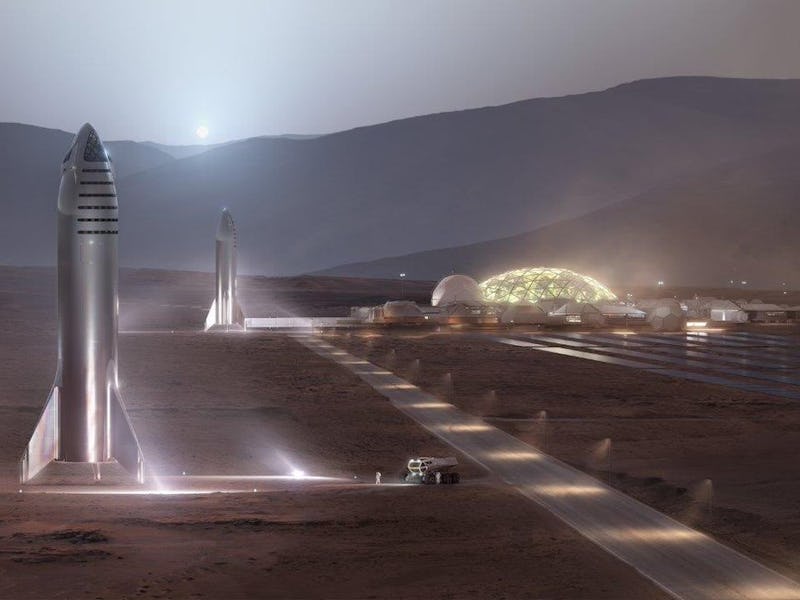SpaceX Starship: Elon Musk teases 100-person cargo bay destined for Mars
The manned mission is on the way.

It may not look like much, but the Starship’s internal cargo bay could transform humanity’s relationship with space.
In a Twitter video shared Tuesday, SpaceX CEO Elon Musk shared a 10-second clip of the inside of the prototype Starship, the vessel designed to send humans to Mars and beyond. Mk.1, as it is known, was unveiled to an audience of journalists and fans at the Boca Chica facility in Texas last Saturday. Although the exterior of the under-development ship sports a futuristic stainless steel design, the video reveals that the interior is currently rather barebones.
Although visually understated, this roomy enclosure could become what Rick Tumlinson, founder of venture capital firm SpaceFund, described as a “Mayflower-class spaceship.” That’s because Musk claims the cargo bay will be large enough to one day send up to 100 people into space at once.
“The ability to deliver 100-plus people at a time to orbit, to space itself, is going to be the beginning of the biggest revolution in the history of humanity, if not life itself,” Tumlinson told Inverse in February 2019. “Having the ability to climb out of the gravity well of Earth means we have the potential to make life and humanity immortal, unkillable.”
For now, the ship that could make humanity immortal is a rather muted affair, with plain walls punctuated by the header tank in the nosecone. The tank is positioned there to offset the weight of the Raptor engines at the base of the ship.
The cargo bay on video.
Watch Musk’s video here.
The bare interior of the Starship vessel.
One day, it could offer something altogether more impressive.
Musk stated in his September 2017 presentation that the cargo area will have a pressurized volume of 825 cubic meters. That’s more than an Airbus A380, which flies with somewhere between 400 and 600 seats. The Starship could offer a configuration of 40 cabins in the cargo area, plus central storage, galley, big common areas, and a solar storm shelter. The cabins could fit six people, but three to six would be a more comfortable number.
The Starship has changed design numerous times since the 2017 presentation. The ship paired with the booster measured 348 feet total in September 2017, but the Saturday presentation suggested the pair now measure 387 feet. On Saturday Musk also described the cabin’s pressurized volume as a larger “around 1,000 cubic meters.”
Musk has suggested he’s still committed to using the Starship to send 100 people into space at a time. On Saturday, he said that “I think you can still do 100 people,” adding that 10 cubic meters per person is a lot more space for people in zero-gravity than on Earth where people are confined to one surface of a room.
SpaceX's Starship landing on the moon.
One area where SpaceX may try to fit more people is with its inter-Earth flights, which would use the Starship to send people between the likes of New York and Paris in just 30 minutes. These no-frills, short flights could hold 1,000 people by confining everyone to their seat and ditching extras like toilets and food areas.
“Probably needs a restraint mechanism like Disney’s Space Mountain roller coaster,” Musk explained in June 2019. “Would feel similar to Space Mountain in a lot of ways, but you’d exit on another continent.”
SpaceX has a number of big ideas for the Starship. It’s planning a trip around the moon in 2023, a manned mission to Mars sometime after, and plans to establish a million-strong city on the red planet sometime in the future.
It may not look like much, but the Starship’s interior could be the start of a multi-planetary species.